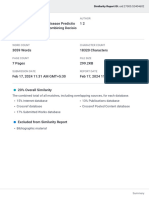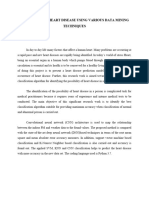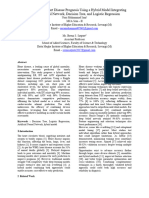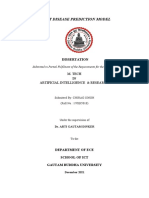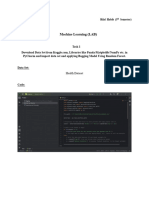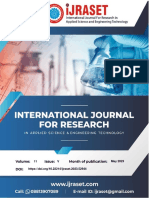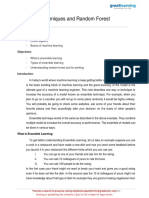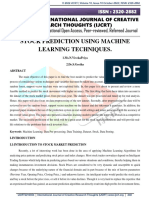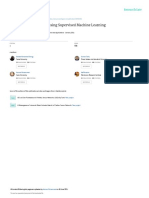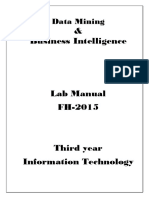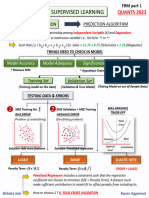0% found this document useful (0 votes)
4 views10 pagesDisease Detection Machine Learning Model
The document outlines the development of machine learning models to predict disease outcomes using patient symptoms and profiles, aiming for early and personalized healthcare. It details the methods of data preparation, feature engineering, model selection, and evaluation metrics, highlighting improvements in accuracy after feature engineering. The conclusion emphasizes the effectiveness of the Random Forest model and the potential for these models to aid in real-world diagnostic decisions.
Uploaded by
Atia BatoolCopyright
© © All Rights Reserved
We take content rights seriously. If you suspect this is your content, claim it here.
Available Formats
Download as PPTX, PDF, TXT or read online on Scribd
0% found this document useful (0 votes)
4 views10 pagesDisease Detection Machine Learning Model
The document outlines the development of machine learning models to predict disease outcomes using patient symptoms and profiles, aiming for early and personalized healthcare. It details the methods of data preparation, feature engineering, model selection, and evaluation metrics, highlighting improvements in accuracy after feature engineering. The conclusion emphasizes the effectiveness of the Random Forest model and the potential for these models to aid in real-world diagnostic decisions.
Uploaded by
Atia BatoolCopyright
© © All Rights Reserved
We take content rights seriously. If you suspect this is your content, claim it here.
Available Formats
Download as PPTX, PDF, TXT or read online on Scribd
/ 10










